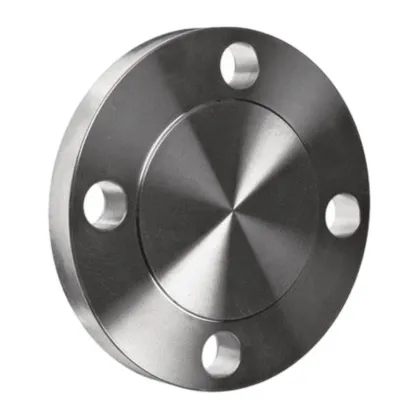-
Cangzhou Yulong Steel Co., Ltd.
-
Phone:
+86 13303177267 -
Email:
admin@ylsteelfittings.com
- English
- Arabic
- Italian
- Spanish
- Portuguese
- German
- kazakh
- Persian
- Greek
- French
- Russian
- Polish
- Thai
- Indonesian
- Vietnamese
- Zulu
- Korean
- Uzbek
- Hindi
- Serbian
- Malay
- Ukrainian
- Gujarati
- Haitian Creole
- hausa
- hawaiian
- Hebrew
- Miao
- Hungarian
- Icelandic
- igbo
- irish
- Japanese
- Javanese
- Kannada
- Khmer
- Rwandese
- Afrikaans
- Albanian
- Amharic
- Armenian
- Azerbaijani
- Basque
- Belarusian
- Bengali
- Bosnian
- Bulgarian
- Catalan
- Cebuano
- China
- China (Taiwan)
- Corsican
- Croatian
- Czech
- Danish
- Esperanto
- Estonian
- Finnish
- Frisian
- Galician
- Georgian
- Kurdish
- Kyrgyz
- Lao
- Latin
- Latvian
- Lithuanian
- Luxembourgish
- Macedonian
- Malgashi
- Malayalam
- Maltese
- Maori
- Marathi
- Mongolian
- Myanmar
- Nepali
- Norwegian
- Norwegian
- Occitan
- Pashto
- Dutch
- Punjabi
- Romanian
- Samoan
- Scottish Gaelic
- Sesotho
- Shona
- Sindhi
- Sinhala
- Slovak
- Slovenian
- Somali
- Sundanese
- Swahili
- Swedish
- Tagalog
- Tajik
- Tamil
- Tatar
- Telugu
- Turkish
- Turkmen
- Urdu
- Uighur
- Welsh
- Bantu
- Yiddish
- Yoruba

Dec . 21, 2024 15:02 Back to list
pipe types
Understanding Pipe Types An Essential Guide
Pipes are an integral part of various industries, serving as conduits for the transport of fluids, gases, and even solids in certain contexts. From construction to manufacturing, understanding different pipe types is crucial for ensuring that systems function effectively and safely. In this article, we will explore the various types of pipes, their materials, unique characteristics, and applications across different sectors.
The Importance of Pipe Materials
Pipes can be made from a variety of materials, each providing distinct advantages and disadvantages. The choice of material often depends on the application, pressure requirements, and the type of fluid being transported.
1. Metal Pipes - Steel Pipes These are widely used in construction and manufacturing due to their strength and durability. Steel pipes can handle high pressures and are often used in oil and gas industries. However, they are susceptible to corrosion if not properly treated or coated. - Copper Pipes Often used in plumbing and HVAC systems, copper pipes are known for their excellent thermal conductivity and resistance to corrosion. They are lightweight and can handle high-pressure applications, making them a preferred choice for hot water systems. - Aluminum Pipes These are lightweight, resistant to corrosion, and have good structural strength. Aluminum pipes are commonly used in aerospace and automotive applications.
2. Plastic Pipes - PVC (Polyvinyl Chloride) Known for its versatility and strength, PVC pipes are commonly used in plumbing and drainage systems. They are resistant to chemical corrosion and are lightweight, making them easy to handle and install. - CPVC (Chlorinated Polyvinyl Chloride) Similar to PVC but with added chlorine for improved resistance to heat and higher temperatures, CPVC pipes are predominantly used in hot water applications. - PEX (Cross-Linked Polyethylene) PEX pipes are flexible and resistant to scale and chlorine, making them suitable for residential plumbing systems. Their flexibility allows for easy installation in tight spaces.
3. Composite Pipes - These pipes combine different materials to leverage their strengths, offering benefits like added durability and resistance to temperature changes. For instance, fiberglass pipes offer high strength-to-weight ratios and can be used in both pressure and non-pressure applications.
Types of Pipes Based on Design
Apart from materials, pipes can also be categorized based on their design and intended application
pipe types

1. Rigid Pipes These offer strong structural integrity and are typically used in situations requiring high pressure and minimal deformation. Steel and ductile iron pipes generally fall under this category.
2. Flexible Pipes Designed to bend and adapt to various environments, flexible pipes are widely used in applications such as draining and irrigation systems. PEX and certain types of plastic pipes exhibit this flexibility.
3. Welded vs. Seamless Pipes - Welded Pipes are made by joining together flat sheets of metal, making them suitable for lower-pressure applications. They are cost-effective but may not be as strong as seamless pipes. - Seamless Pipes are manufactured without seams, providing higher strength and pressure ratings, making them ideal for high-pressure applications found in the oil and gas industry.
Applications in Various Industries
Pipe types are tailored to fit specific industrial needs. For instance, in the oil and gas sector, carbon steel pipes are often employed due to their strength and durability under extreme conditions. In contrast, PVC pipes are preferred for residential drainage systems due to their lightweight and corrosion-resistant properties.
In construction, different types of pipes provide services ranging from plumbing to electrical conduits, ensuring buildings operate efficiently. Furthermore, in agriculture, irrigation systems rely heavily on durable plastic pipes to transport water efficiently.
Conclusion
Understanding the various pipe types and their applications is essential for anyone involved in construction, plumbing, or manufacturing. The choice of pipe will influence the efficiency, safety, and longevity of the systems they serve. By selecting the appropriate materials and designs, industries can ensure reliable operations while minimizing costs and environmental impacts. As technology evolves, we can also anticipate new materials and innovations in pipe design, fostering even greater efficiency and sustainability in various applications.
Latest news
-
ANSI 150P SS304 SO FLANGE
NewsFeb.14,2025
-
ASTM A333GR6 STEEL PIPE
NewsJan.20,2025
-
ANSI B16.5 WELDING NECK FLANGE
NewsJan.15,2026
-
ANSI B16.5 SLIP-ON FLANGE
NewsApr.19,2024
-
SABS 1123 FLANGE
NewsJan.15,2025
-
DIN86044 PLATE FLANGE
NewsApr.19,2024
-
DIN2527 BLIND FLANGE
NewsApr.12,2024
-
JIS B2311 Butt-Welding Fittings LR/SR 45°/90° /180°Seamless/Weld
NewsApr.23,2024











